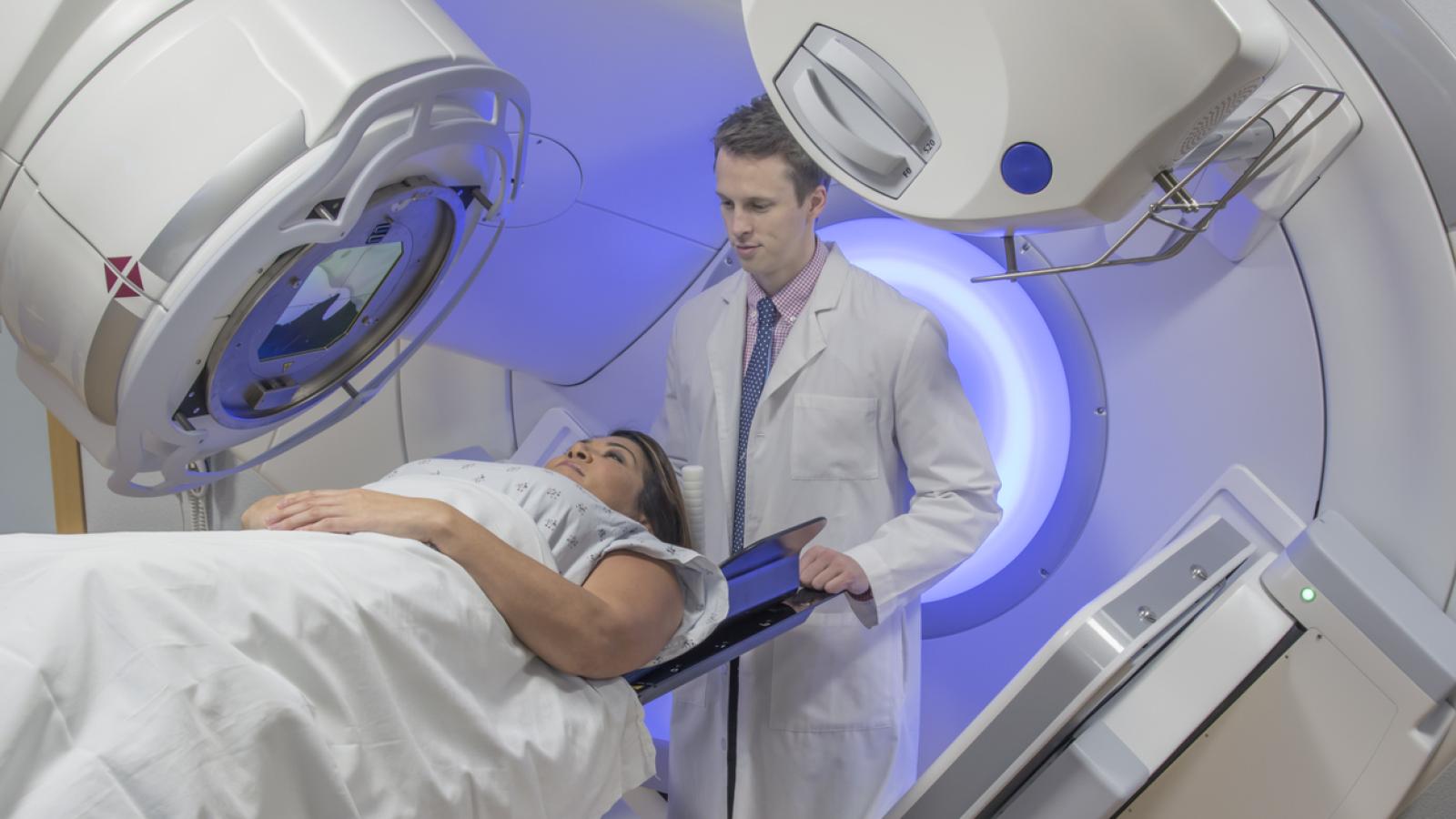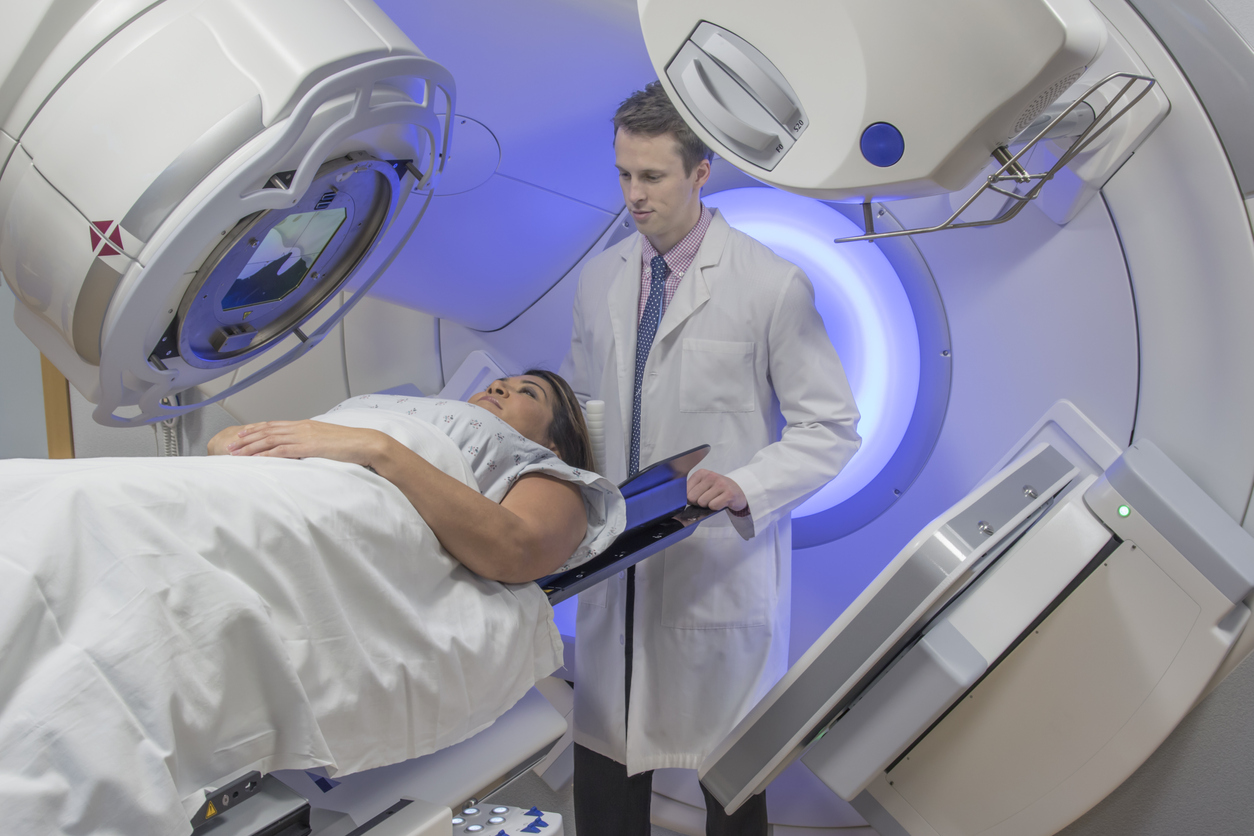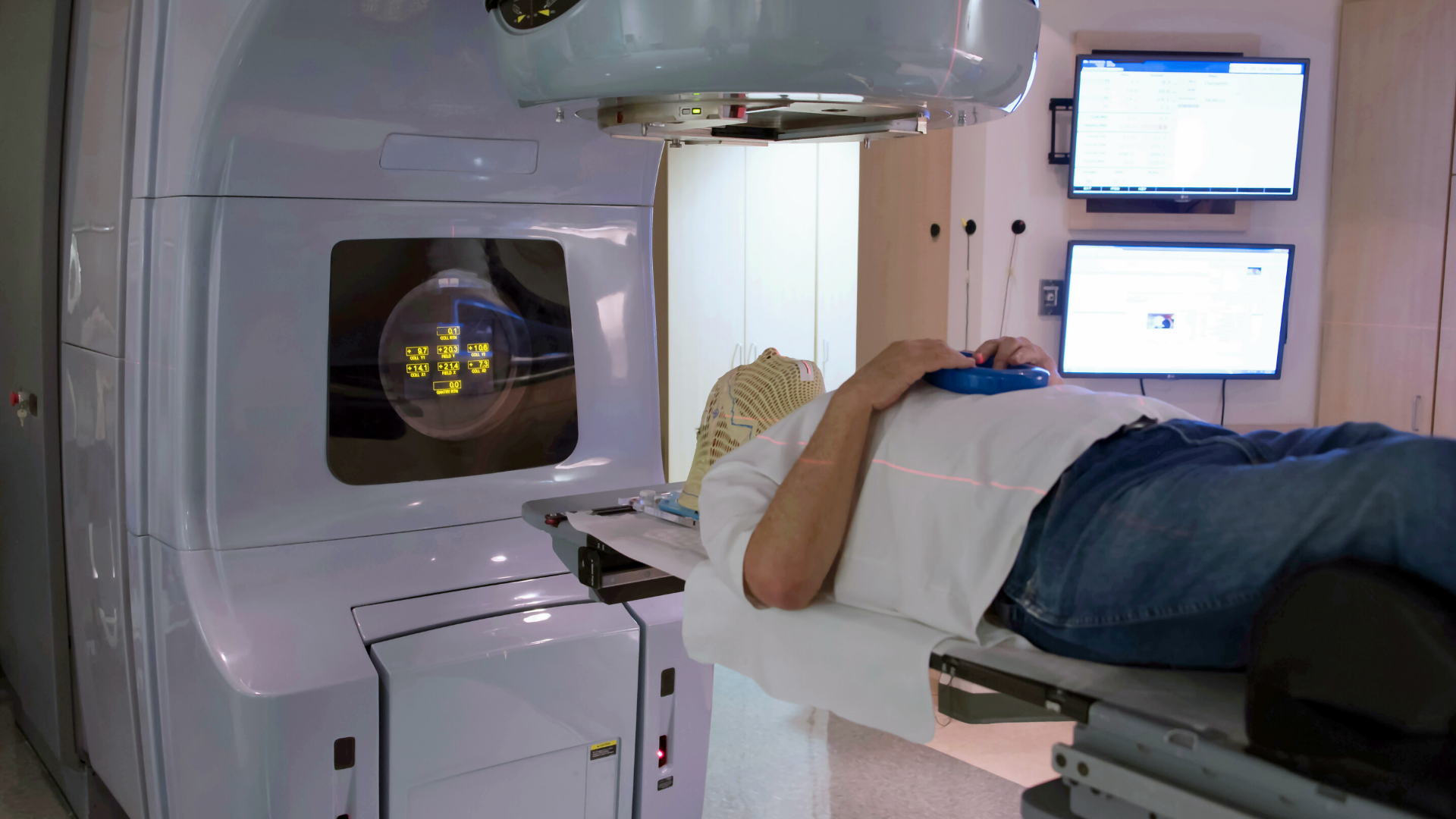External radiotherapy

Planning external radiotherapy (CT simulation)
Radiation beams can damage normal cells as well as cancer cells. To make sure your treatment is as precise as possible − to avoid damage to healthy cells − you will have at least one planning appointment (CT simulation appointment) at the hospital before you have your radiotherapy.
Physical exam
A physical exam will be done to check the general state of your health. You may need to have some X-rays, scans and blood tests done as well.
Before starting treatment, tell your doctor about any medicines you are taking, including herbal remedies, as they might affect your treatment. If you have any allergies or sensitive skin, it is worth mentioning these too.
CT planning (CT simulation)
You will have a CT scan is to pinpoint the area to be treated (treatment field) and decide on the position you will be in when you have your radiotherapy treatment.
You will lie still on a flat surface. Laser lights will be used to make sure you’re lying in a straight position on the bed. After the scan, your skin will be marked with tiny tattoo dots, so that the machine can be lined up using these marks as a guide when you actually have your treatment. CT planning (CT simulation) can last for up to 30 minutes.
Immobilisation
You need to stay as still as possible during the planning and treatment sessions. Part of your planning may involve you being fitted for pads, special vacuum bags or a mask to keep you still. See more about masks and other immobilisation devices.
It is natural to feel anxious about radiotherapy. If you have any questions or concerns, no matter how small, talk to your radiation therapist.
Getting external radiotherapy
Getting into position
The radiation therapists will help you onto the treatment table and will adjust both the table and the machine to the exact positions needed. You will be put in the same position as at your CT planning scan. Because you need to keep still during treatment, they will make you as comfortable as possible.
The radiation therapist will leave the room to set up the machine. The lights will be turned down and laser lights will be used to line up the beam with the marks on your skin that show where the radiation will be aimed.
Having radiotherapy
The radiation machines are operated from outside the room in the control area. The radiation therapists will be watching you on a closed-circuit television. They can hear and see you and can talk to you through an intercom. If you need them, just tell them. They can stop the machine and come in to you. If you’re wearing a mask, just wave your hand.
You need to stay as still as possible during the treatment so that radiation only reaches the treatment areas and so that the same area is treated each time. Relax as much as you can and just breathe normally. The machine may move around you, but it will not touch you.
Does it hurt?
Radiotherapy doesn’t hurt – it’s just like having an X-ray. You might feel a bit uncomfortable having to stay still, though. Sometimes your skin can get sore afterwards in the treated area. You should tell your nurse or doctor if your skin is sore, they may be able to recommend some gentle creams you can use.
How long does it take?
A treatment session takes around 20 minutes.
How long will I have treatment for?
It depends on your treatment plan. Often a course of external radiotherapy lasts around 3-8 weeks, where you go to hospital every week day for treatment, with a break at weekends. Each treatment is called a fraction so you will receive, for example, five fractions per week.
For more information
Phone
1800 200 700



